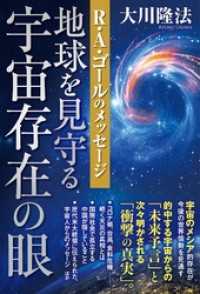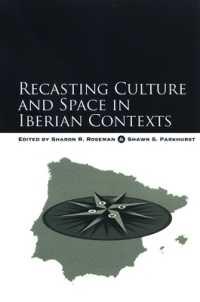- ホーム
- > 洋書
- > 英文書
- > Nature / Ecology
Full Description
Aquatic Biodiversity: Theories, Approaches, and Future Directions reviews the development of metacommunity ecology theory in aquatic systems. The book explores aquatic dispersal as a driver of community biodiversity, patterns, and processes. Considered a relatively new field, metacommunity ecology created a paradigm shift in the field of aquatic ecology by developing a novel, network-based theory that differences in connectivity throughout aquatic systems lead to predictable variations in the mechanisms of assembly for lentic and lotic communities. This book collates the cutting edge conceptual, theoretical, and empirical advancements of the field and its contributions to invasive species management, biomonitoring, and stream restoration.
Written and edited by many of the key researchers contributing to the development of the field, this book is systematically structured for easy accessibility by diverse audiences. Introductory sections discuss the importance of spatial structure, dispersal dynamics in aquatic systems, the effects of disturbances, and eco-evolutionary dynamics. Latter chapters apply these theories by describing field experiments in lentic and lotic systems and highlighting the field's applications to stream restoration, invasive species monitoring, urban ecosystem management, and biomonitoring at varying spatial scales.
As advancements and refinements to the field of metacommunity ecology develop, Aquatic Biodiversity presents the first compendium establishing its foundational theories and their applications in aquatic ecology. For this reason, it is an indispensable resource for students, researchers, community ecologists, and aquatic resource managers.
Contents
1. Metacommunity ecology in aquatic systems
2. The importance of spatial structure in lotic systems
3. Streams as dendritic systems
4. Using network modeling to quantify population and community dynamics in dendritic stream networks
5. Importance of dispersal in lotic systems
6. The physical study of dispersal: fish
7. Microbial biodiversity in river networks
8. Experiments using microcosm systems
9. Field experiments in lotic systems
10. A network approach to stream drying
11. Metacommunity approaches to invasive species in aquatic systems
12. Metacommunity approaches to urban aquatic ecosystems
13. Applying metacommunity-based biomonitoring metrics on large spatial scales
14. Effects of spatial structure on functioning in streams
15. Summary and future directions








